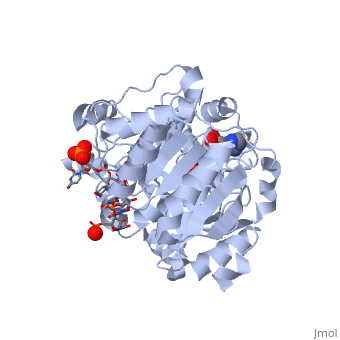2db3
From Proteopedia
Structural basis for RNA unwinding by the DEAD-box protein Drosophila Vasa
Structural highlights
Function[VASA_DROME] Involved in translational control mechanisms operating in early stages of oogenesis. Required maternally in many stages of oogenesis, including cystocyte differentiation, oocyte differentiation, and specification of anterior-posterior polarity in the developing cysts. Essential for the formation and/or structural integrity of perinuclear nuage particles.[1] [2] [3] [4] [5] [6] [7] [8] Evolutionary ConservationCheck, as determined by ConSurfDB. You may read the explanation of the method and the full data available from ConSurf. Publication Abstract from PubMedDEAD-box RNA helicases, which regulate various processes involving RNA, have two RecA-like domains as a catalytic core to alter higher-order RNA structures. We determined the 2.2 A resolution structure of the core of the Drosophila DEAD-box protein Vasa in complex with a single-stranded RNA and an ATP analog. The ATP analog intensively interacts with both of the domains, thereby bringing them into the closed form, with many interdomain interactions of conserved residues. The bound RNA is sharply bent, avoiding a clash with a conserved alpha helix in the N-terminal domain. This "wedge" helix should disrupt base pairs by bending one of the strands when a duplex is bound. Mutational analyses indicated that the interdomain interactions couple ATP hydrolysis to RNA unwinding, probably through fine positioning of the duplex relative to the wedge helix. This mechanism, which differs from those for canonical translocating helicases, may enable the targeted modulation of intricate RNA structures. Structural basis for RNA unwinding by the DEAD-box protein Drosophila Vasa.,Sengoku T, Nureki O, Nakamura A, Kobayashi S, Yokoyama S Cell. 2006 Apr 21;125(2):287-300. PMID:16630817[9] From MEDLINE®/PubMed®, a database of the U.S. National Library of Medicine. See AlsoReferences
| ||||||||||||||||||||||


